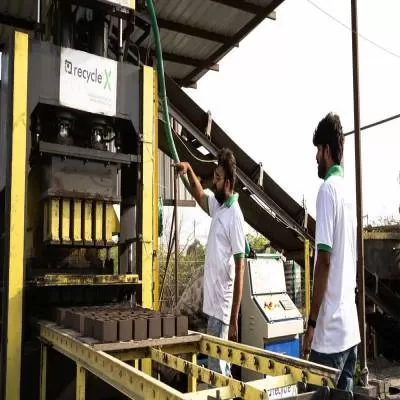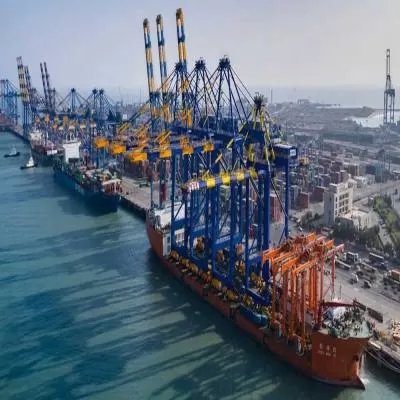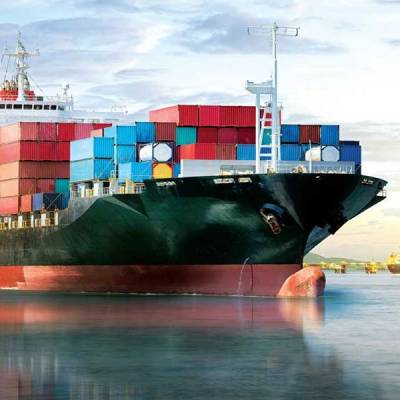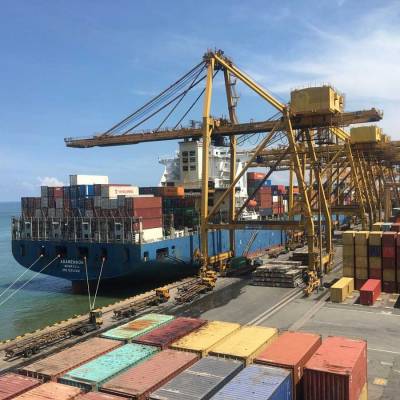- Home
- Infrastructure Transport
- PORTS & SHIPPING
- Set to sail?
Set to sail?
Finally, the FM has managed to give infrastructure a wholesome push and a defined focus within the perimeter of the Union Budget. The connection between economic growth, the Union Budget and infrastructure spending has never been so pronounced. Considering that the Eleventh Five Year Plan bemoans the lack of budgeted spending, this budget has targeted a spend of Rs 2.14 lakh crore towards developing the country's infrastructure in the next fiscal. Last year's budget left everyone in the sector gasping, as the FM had finished with the sector even before he had begun. But this time round, there's much more:
- To enhance the flow of funds to the infrastructure sector, the FII limit for investment in corporate bonds, with residual maturity of over five years issued by companies in infrastructure sector, is being raised by an additional limit of $20 billion taking the limit to $25 billion, raising the total limit available to FIIs for investment in corporate bonds to $40 billion. Since most companies in the sector are organised in the form of SPVs, FIIs would now be permitted to invest in unlisted bonds with a minimum lock-in period of three years.
- To attract foreign funds for infrastructure financing, the FM has proposed to create special vehicles in the form of notified infrastructure debt funds. Interest payments on the borrowings of these funds will have a reduced withholding tax rate of 5 per cent instead of the current rate of 20 per cent, while full exemption of income of the fund from tax has been proposed.
- Tax-free bonds of Rs 30,000 crore will be issued for the enhancement of infrastructure in railways, ports, housing and highways.
- India Infrastructure Finance Company Limited or IIFCL is expected to achieve a disbursement target of Rs 20,000 crore by March 31, 2011 and Rs 25,000 crore by March 31, 2012. The take-out financing scheme announced in the Budget 2009-10 has been implemented and seven projects have been sanctioned with a debt of Rs 1,500 crore. Another Rs 5,000 crore will be sanctioned during 2011-12.
- Bharat Nirman's allocation has been raised to Rs 58,000 crore, an increase of Rs 10,000 crore from the current year.
Infrastructure status has been granted to cold storage chains. - Capital investments in the fertiliser sector have been proposed to be given infrastructure status.
- Full exemption from basic customs duty has been extended to bio-asphalt, an emerging green technology for the surfacing of roads, and specified machinery for its application in the construction of national highways. Tunnel-boring machines required for the construction of highways are also being included in this exemption.
- The finance minister also proposed to raise the corpus of the Rural Infrastructure Development Fund from Rs 16,000 crore to Rs 18,000 crore.
- Further, tax sops in infrastructure investment up to Rs 20,000 has been extended by a further one year.
Infra spending gives a multiplier effect in the economy and hence the impact of this budget lies in its timely execution, as always. As in the telecom sector, the infra sector too, must aim at getting the bids for all infra projects to be issued at one go; this will help more companies participate in projects, rather than have a few controlling all the projects. But, before that, we need the Land Acquisition Bill to see the light of day. Truly, if this budget has to ride the wave, the government needs to mend its sails.
Finally, the FM has managed to give infrastructure a wholesome push and a defined focus within the perimeter of the Union Budget. The connection between economic growth, the Union Budget and infrastructure spending has never been so pronounced. Considering that the Eleventh Five Year Plan bemoans the lack of budgeted spending, this budget has targeted a spend of Rs 2.14 lakh crore towards developing the country's infrastructure in the next fiscal. Last year's budget left everyone in the sector gasping, as the FM had finished with the sector even before he had begun. But this time round, there's much more: To enhance the flow of funds to the infrastructure sector, the FII limit for investment in corporate bonds, with residual maturity of over five years issued by companies in infrastructure sector, is being raised by an additional limit of $20 billion taking the limit to $25 billion, raising the total limit available to FIIs for investment in corporate bonds to $40 billion. Since most companies in the sector are organised in the form of SPVs, FIIs would now be permitted to invest in unlisted bonds with a minimum lock-in period of three years. To attract foreign funds for infrastructure financing, the FM has proposed to create special vehicles in the form of notified infrastructure debt funds. Interest payments on the borrowings of these funds will have a reduced withholding tax rate of 5 per cent instead of the current rate of 20 per cent, while full exemption of income of the fund from tax has been proposed. Tax-free bonds of Rs 30,000 crore will be issued for the enhancement of infrastructure in railways, ports, housing and highways. India Infrastructure Finance Company Limited or IIFCL is expected to achieve a disbursement target of Rs 20,000 crore by March 31, 2011 and Rs 25,000 crore by March 31, 2012. The take-out financing scheme announced in the Budget 2009-10 has been implemented and seven projects have been sanctioned with a debt of Rs 1,500 crore. Another Rs 5,000 crore will be sanctioned during 2011-12. Bharat Nirman's allocation has been raised to Rs 58,000 crore, an increase of Rs 10,000 crore from the current year.Infrastructure status has been granted to cold storage chains. Capital investments in the fertiliser sector have been proposed to be given infrastructure status. Full exemption from basic customs duty has been extended to bio-asphalt, an emerging green technology for the surfacing of roads, and specified machinery for its application in the construction of national highways. Tunnel-boring machines required for the construction of highways are also being included in this exemption. The finance minister also proposed to raise the corpus of the Rural Infrastructure Development Fund from Rs 16,000 crore to Rs 18,000 crore. Further, tax sops in infrastructure investment up to Rs 20,000 has been extended by a further one year. Infra spending gives a multiplier effect in the economy and hence the impact of this budget lies in its timely execution, as always. As in the telecom sector, the infra sector too, must aim at getting the bids for all infra projects to be issued at one go; this will help more companies participate in projects, rather than have a few controlling all the projects. But, before that, we need the Land Acquisition Bill to see the light of day. Truly, if this budget has to ride the wave, the government needs to mend its sails.
























